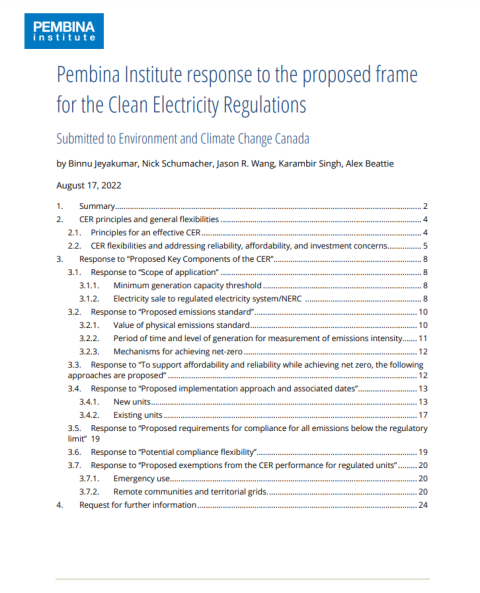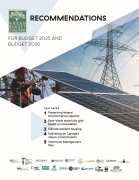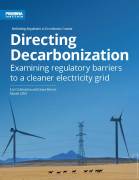The Pembina Institute welcomes Environment and Climate Change Canada’s Proposed Frame for the Clean Electricity Regulations, as a tangible step towards Canada implementing its commitment to a net-zero grid by 2035. This document is the Institute’s response to the proposed frame.
As outlined in our report Achieving a Net-Zero Canadian Electricity Grid by 2035, it is crucial that Canada achieves a net-zero grid by 2035 in order to facilitate the full decarbonization of the rest of the economy by 2050, enable grid reliability and resilience, ensure affordability of energy for consumers, create jobs and economic development opportunities, and address historic inequities in the energy system.
The government’s Proposed Frame provides an overall structure that could deliver a net-zero grid by 2035, if certain design elements and fundamental assumptions are addressed to achieve that goal. In this report, we articulate our reactions to various elements of the proposed frame, and summarize our main reactions below:
CER context and outcomes
- The CER must achieve a credible net-zero grid by 2035, which means electricity generation that is predominantly non-emitting and any residual emissions are accounted for with credible offsets.
- An ambitious and stringent CER is also needed to ensure that a strong signal is sent to encourage investments in clean energy in the electricity sector. Every additional compromise to the stringency of the CER weakens the clarity of this signal.
- A net-zero grid can improve reliability and affordability of electricity for consumers. Any flexibilities introduced to the design with the issues of affordability and reliability in mind should be re-assessed in light of the economic competitiveness of and grid services provided by non-emitting electricity assets.
- We understand that there will be specific short-term implementation challenges in certain regions. These challenges should be appropriately addressed — and the opportunities in clean energy taken advantage of — through appropriate federal and provincial measures outside the CER, rather than by introducing flexibilities into the CER and thereby reducing its efficacy not only in reducing emissions but also in encouraging new investments in clean energy.
CER design elements
- The CER must ensure that any electricity emissions in 2035 and beyond are addressed with credible, verifiable, additional and permanent offsets, in order to achieve a truly net-zero grid by 2035 that is credible to investors, Canadian citizens, companies with ESG goals, civil society, and the international community.
- The CER must include interim targets, and must be applicable to new units at an earlier point, to prevent the creation of additional stranded assets in the future.
- All electricity emissions from cogeneration and behind-the-fence generation must be subject to the CER.
- Remote communities and territorial grids must be included in the CER to ensure they are included in efforts to decarbonize Canada’s electricity generation. The recommendations related to remote communities and territorial grids are a working proposal that the Pembina Institute is continuing to engage with Indigenous communities, organizations, and rightsholders to finalize.












